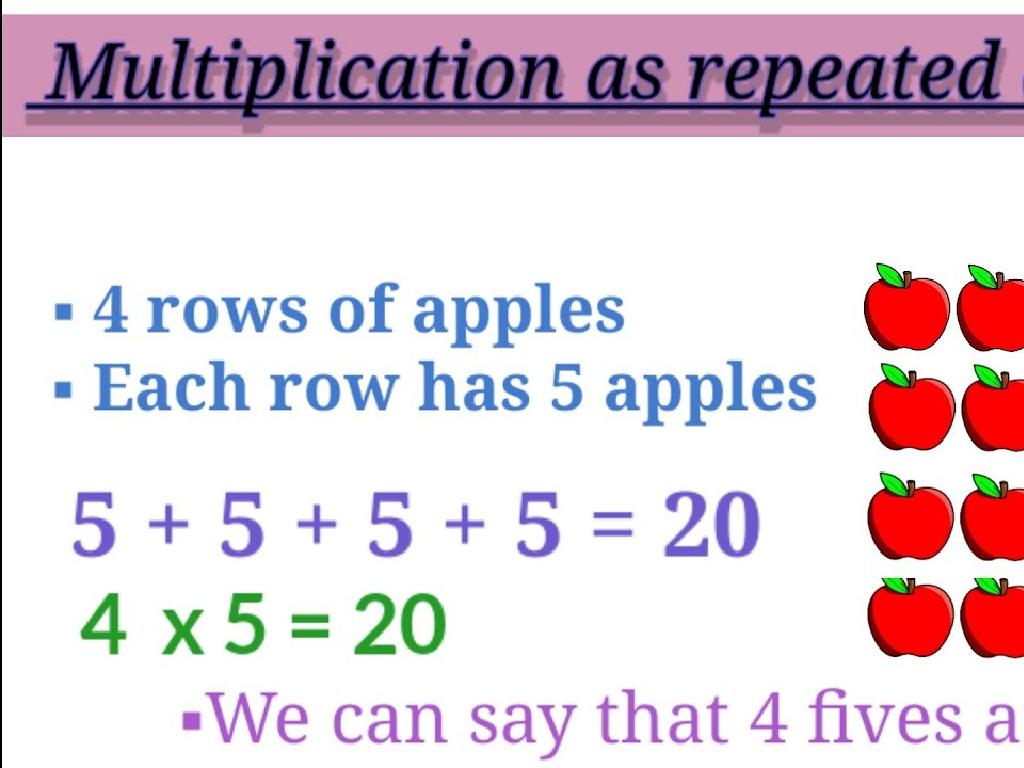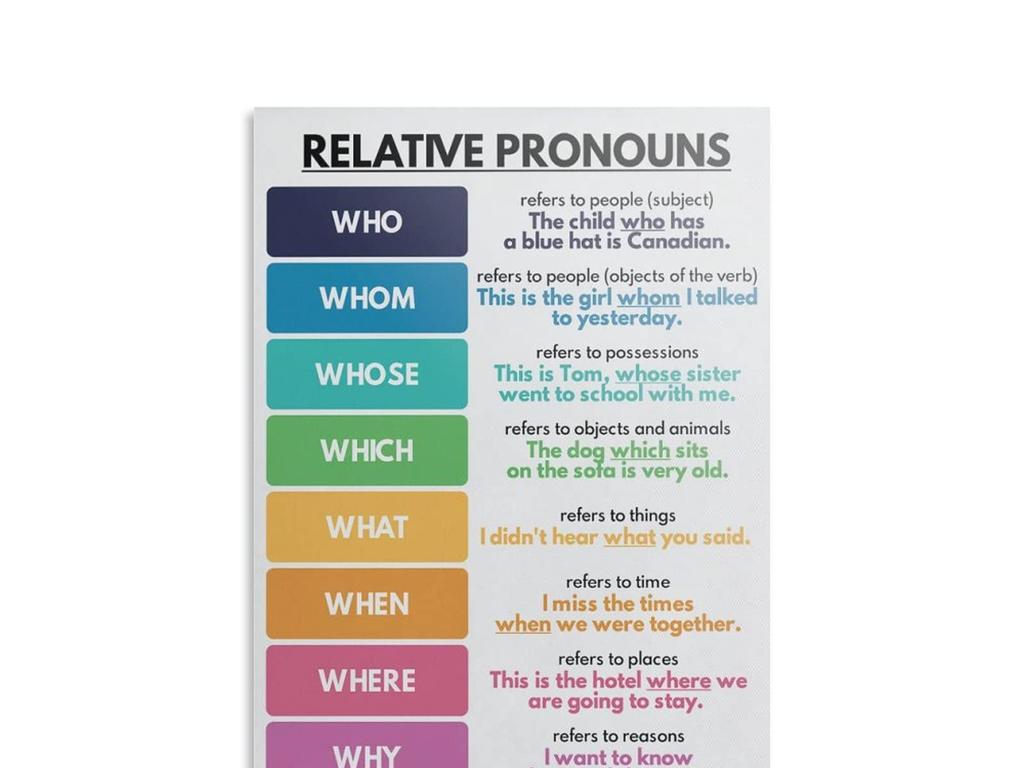Adding 7
Subject: Math
Grade: First grade
Topic: Addition Up To 20
Summary: This first-grade math presentation focuses on mastering addition by adding 7 to numbers up to 20. Through stories, hands-on activities, games, and visual aids, students learn to combine groups and count forward, building confidence in basic arithmetic. Engaging exercises like number line jumps, object counting, and interactive games help reinforce the skill, making math fun and relevant for young learners while supporting foundational number sense.
Please LOG IN to download the presentation. Access is available to registered users only.
View More Content
Welcome to Addition: Adding 7
– Greetings, bright minds!
– Today’s focus: Adding 7
– We’ll explore how to add 7 to other numbers.
– Why addition is useful
– Addition combines numbers into a total sum.
– Let’s practice adding 7!
|
This slide is designed to introduce first graders to the concept of addition, specifically focusing on adding the number 7. Start the lesson with a warm greeting to create an inviting atmosphere. Explain that the day’s lesson will help them understand how to add 7 to other numbers, making counting faster and easier. Emphasize the practicality of addition in everyday life, such as combining groups of items. Engage the students with interactive activities where they can practice adding 7 to different numbers up to 20. Use visual aids like number lines or counters to help them visualize the process. Encourage participation and praise their efforts to build confidence.
Learning to Add 7
– Addition combines numbers
– Adding makes one big group
– Let’s add with a story
– We’ll use a story about 7 playful puppies
– Practice adding up to 20
– Use fingers or objects to count
|
This slide introduces the concept of addition to first graders by explaining that addition is the process of combining two or more numbers to find a total. Emphasize that when we add, we are bringing groups together to see how many we have altogether. To make this concept engaging, introduce a story involving 7 playful puppies, which will be used as a basis for practice. Encourage the students to use their fingers or objects like counters to add numbers up to 20, reinforcing the concept of ‘adding 7’ in a tangible way. The story will help them visualize the addition process, and using physical objects will help them understand the concept of combining groups to find a total.
Adding 7 to 1: Counting Apples
– Start with 1 apple
– Find 7 more apples
– How many apples in total?
– Use objects or fingers to count from 1 to 8
– Let’s count all together!
– Practice counting with the class
|
This slide is designed to introduce first-grade students to the concept of addition by using a relatable scenario involving apples. Start by presenting the scenario where the student has one apple and finds seven more, prompting them to think about the total number of apples. Encourage the students to visualize the apples and use physical objects or their fingers to count from one to eight, reinforcing the concept of ‘adding 7’. This interactive counting exercise will help solidify their understanding of basic addition. Make sure to engage with the students by asking them to count out loud together and affirm their counting with positive reinforcement.
Adding 7 to 2: Counting Balloons
– Start with 2 balloons
– Add 7 more balloons
– Imagine getting 7 birthday balloons
– Count all the balloons together
– Use your fingers or objects to count from 2 to 9
– Discover the total number of balloons
– 2 balloons plus 7 more makes 9 balloons in total
|
This slide is designed to help first graders understand the concept of addition by using a relatable scenario of receiving balloons. Start by establishing the initial number of balloons, then visually or conceptually add 7 more balloons to the existing 2. Encourage the students to count aloud from 2 up to 9, reinforcing the addition of 7. Use physical props like actual balloons or counters if possible to make the activity interactive and engaging. The goal is to help students visualize the addition process and arrive at the correct total, understanding that adding 7 to any number increases the count by 7 steps.
Adding 7 to Numbers
– Start with 3 ducks in a pond
– 7 more ducks join them
– How many ducks are swimming?
– Use fingers or objects to count 7 more
– Counting all ducks together
– Add 3 + 7 to find the total
|
This slide introduces the concept of addition by combining two groups of objects. Start by visualizing a scenario where 3 ducks are already in a pond and then 7 more ducks come to swim. Ask the students how many ducks are swimming now to engage them in the process of counting on from 3. Encourage them to use their fingers or physical objects to count 7 more from 3. This helps to solidify the concept of addition as combining two sets. After the counting activity, guide them to the mathematical expression 3 + 7 and demonstrate how to arrive at the total number of ducks, which is 10. Reinforce the idea that addition is about finding out how many items there are altogether when two groups are combined.
Practice Time: Adding 7
– Let’s practice adding 7 together
– We’ll solve problems as a class
– Everyone gets a turn at the board
– Adding 7 to different numbers
– Example: If we have 5, what’s 5 plus 7?
|
This slide is designed to engage students in active participation. Start by inviting students to the board to solve addition problems involving the number 7. Make sure to encourage and guide them as they work through the problems. Provide positive feedback and assistance as needed. It’s important to ensure that each student has an opportunity to participate and practice. You can use number lines, counting objects, or fingers to help them visualize the addition process. For homework, assign a few simple addition problems that require adding 7 to reinforce the lesson. Remember to keep the atmosphere fun and supportive to foster a love for math.
Adding 7 to Numbers
– Use a number line to add 7
– Starting at any number, count 7 steps to the right
– Jump 7 steps forward
– Each jump represents adding 1; we make 7 jumps
– Observe how numbers increase
– Adding 7 makes our starting number larger every time
– Practice with different numbers
|
This slide introduces the concept of addition by using a number line to add 7 to various numbers. It’s a visual and interactive way for first graders to understand how addition works. Start by showing a number line and demonstrate how to make 7 jumps forward from a chosen number. Emphasize that with each jump, the number increases by 1, and after 7 jumps, the number has increased by 7. Encourage students to practice this with different starting numbers, both within and beyond 10, to solidify their understanding of addition. The activity will help them visualize the concept of addition and understand that adding 7 makes a number larger.
Let’s Play a Game: Race to 20!
– Roll the dice for your turn
– Add 7 to your roll
– If you roll a 3, what’s 3 + 7?
– Move your piece forward
– Advance the number of spaces you get after adding 7
– First to reach 20 wins!
|
This slide introduces a fun and interactive game to help first graders practice adding 7. The game ‘Race to 20’ is designed to reinforce their addition skills in a playful setting. Each student will take turns rolling a dice and then add 7 to the number they roll. They will then move their game piece forward by that total number. This activity not only helps with their math skills but also encourages counting, turn-taking, and sportsmanship. As a teacher, facilitate the game, ensure fair play, and guide them through the addition process if they struggle. Prepare to celebrate each child’s effort and progress, regardless of who wins the game.
Class Activity: Adding 7 with Objects
– Understand addition with objects
– Each student adds 7 objects
– Pick any object, then add 7 more
– Visualize real-life addition
– See how numbers increase with items
– Take turns for hands-on practice
|
This activity is designed to provide students with a tangible understanding of addition by using physical objects. It will help them grasp the concept of ‘adding 7’ in a fun and interactive way. Before starting, explain that addition is simply the process of bringing things together to find out how many there are in total. During the activity, ensure each student has a set of objects to work with. They can start with any number of objects, then add 7 more to see the result. Encourage them to count out loud as they add. Possible variations of the activity could include using different types of objects, adding 7 to different starting numbers, or working in pairs to add their objects together. The goal is to reinforce the concept of addition and the number 7 through repetition and hands-on experience.
Review: Adding 7
– Recap on adding 7
– We learned how to add 7 to numbers up to 13.
– Add 7 to your favorite number
– If your favorite number is 5, what’s 5 + 7?
– Show and tell with adding 7
– Let’s see how you add 7 to different numbers!
– Questions about adding 7?
|
This slide is meant to review what we’ve learned about adding the number 7 to other numbers. Start by asking the class to recall the steps we take when adding 7. Then, invite students to participate by adding 7 to their favorite number, which helps personalize the learning experience. Encourage them to come to the board and demonstrate their addition skills. This interactive approach reinforces their understanding and allows for peer learning. Finally, open the floor for any questions the students might have, ensuring they feel comfortable with the concept before moving on. Be prepared to offer additional examples or to revisit any steps that may not be clear to all students.
Homework Challenge: Adding 7
– Take your worksheet home
– Practice adding 7 to numbers
– Try 7 + 3, 7 + 5, or 7 + 8
– Complete the addition problems
– Show your work tomorrow
– We’ll review it together in class!
|
This homework assignment is designed to reinforce the concept of addition, specifically focusing on adding the number 7 to various numbers up to 20. The worksheet provided will have a series of addition problems that the students are to complete at home. Encourage the students to use different methods to add 7, such as counting on fingers, using objects, or drawing pictures. Remind them to bring back the completed worksheet the next day so that you can review their work together. This will help you assess their understanding of the concept and provide additional support where needed.





/human_history_cities_empires.jpg)